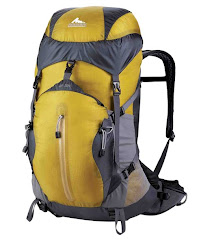 I was unfortunate to witness a ground fall at the Red River Gorge a few weekends ago. Thankfully, the climber was unscathed after a scary loss of consciousness and evacuation to Lexington. The up side of witnessing an event like this is the blatant reminder to pay attention to safety at all times. I think all who were at the crag that day left with some important lessons learned. Here are a few of mine:
I was unfortunate to witness a ground fall at the Red River Gorge a few weekends ago. Thankfully, the climber was unscathed after a scary loss of consciousness and evacuation to Lexington. The up side of witnessing an event like this is the blatant reminder to pay attention to safety at all times. I think all who were at the crag that day left with some important lessons learned. Here are a few of mine:1. Anything can happen on any grade of climb. Remember this before you leave the ground, as you make your clips, and as you grab for slack. Remember this every time you climb.
2. The belayer's job is to keep you off the ground and keep you from harm if at all possible. As a belayer, analyze potential hazards- awkward clipping stances, poorly placed bolts, ledges and potential ground falls and make a mental plan for avoiding the hazards. Do this BEFORE the climber leaves the ground and CONSTANTLY as the climber progresses up the route. Communicate with your climber about these hazards- even if the grade is far beneath their ability.
3. You the climber must constantly make judgment calls and communicate them with your belayer. The climber too must analyze potential hazards and point them out to the belayer. Both of you must be on your toes to ensure your safety. Is your belayer distracted? Don't be afraid to get their attention. Don't keep climbing if you suspect the belayer is not paying attention. Say "watch me" when you feel unsure or unstable to alert your belayer.
4. The first 3 bolts often have ground fall potential. You may not have hit the crux yet, so this may not be on your mind, but you can easily slip, misjudge, sneeze, get stung by a bee, etc. Belayer and climber must be on high alert through this section of every climb regardless of the grade. Of course, both should be on high alert for the entire climb, but always be aware of the fact that slack in the system and the dynamic nature of a climbing rope can equate to hitting the ground in many scenarios.
5. Keep yourself on belay the entire time you clean a route. I see so many climbers NOT doing this, and it leaves little margin for error. Learn how to clean a route properly and safely, which means you should be on belay the entire time.
6. Even if you rarely lead routes, you need to know basic safety for climbing outdoors. It may look and feel like the gym, but climbing outdoors brings into play countless additional factors. Knowledge is power for keeping you and your friends safe. Be proactive about learning to climb safely.
7. Back up your belay device if you need to go hands free. I see people going hands free with grigris often or letting go of the belay while a climber is clipped in direct. Your brake hand is always on duty.
8. Tie a knot in the end of your rope. If you do this, you will never lower a climber off the end of a rope or rappel off your own rope. Both incidents happen frequently for no good reason.
9. Understand the limitations of a Daisy Chain. This is a useful piece of equipment when used properly. Make sure you are aware of how NOT to use a Daisy Chain.
10. Be careful who you let belay you. Even a good friend can give you a faulty belay. Be careful before accepting a belay from a stranger- your life depends on it. Period.
Many of these lessons are paramount to multi pitch trad climbing, and are often skipped or ignored when sport climbing. I see more than ever why to use these practices when climbing trad or sport, climbing or belaying- ALL the time.
Climb Safe!!















No comments:
Post a Comment